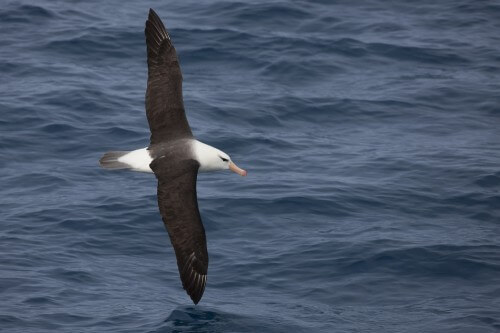Aeronautical engineers and biologists have followed the path of albatrosses over the ocean, revealing patterns in the energy efficiency of their movement.

Aeronautical engineers and biologists have followed the path of albatrosses over the ocean, revealing patterns in the energy efficiency of their movement.
Albatrosses roam long distances. They can stay four whole weeks above the oceans in a flying orbit. The albatross has an impressive wingspan (3.7 meters), which allows the bird to fly thousands of miles without flapping. It is clear that such a long journey requires energy efficiency.
A team of aeronautical engineers and researchers from Germany and France are gaining an understanding of how the albatrosses take off with little effort. The research is based on fieldwork conducted several years ago on Kergolan Island, also known as Desolation Island, located in the middle of the Australia-Africa-Antarctica triangle. Lightweight transmitters were attached to the birds, allowing researchers to track their flight paths with great precision. The researchers settled on the island and engaged in optimizing the sensors and processing the data. The study was published in PLOS One and was recently featured in Aviation Week.
The researchers found that the flight path of the albatrosses is not straight but a repeated curve, starting with a movement close to the surface of the sea, continuing with a sharp turn towards the wind to gain altitude. Reaching a height of about 15 meters and facing back down while gliding and without effort. This movement cycle takes about 15 seconds.
The research findings show that the albatross moves in a method called dynamic soaring. This aviation technique enables energy harvesting by exploiting the wind gradient, by repeatedly crossing the boundary between air masses with significantly different speeds. The researchers concluded that the albatross gains the energy in the upper curved part of the dynamic lift. The difference between the wind speed at low and high altitude is the key to the dynamic lift.
The albatrosses continued to impress ashore as well, when they demonstrated navigational skill to find their nests after four weeks of navigating over the sea.
It is hard to imagine a commercial plane moving close to the surface of the sea, quickly cutting up and coming back down. The natural application is precisely for unmanned aircraft, which have to stay in the air for a long time in order to receive signals, for example. Another application of the research findings could be the optimization of flight routes. Many years have passed since the first airplane flew, but birds are still a source of knowledge and innovation in the world of aviation.

2 תגובות
If protecting a helicopter rotor. He looks like a flying saucer. Therefore, it is possible to learn something from the identified people who perform from "natural" materials.
It is also certain that the albatross does not own these studies.
He takes off and lands by instinct. Maybe they will investigate this ingredient.